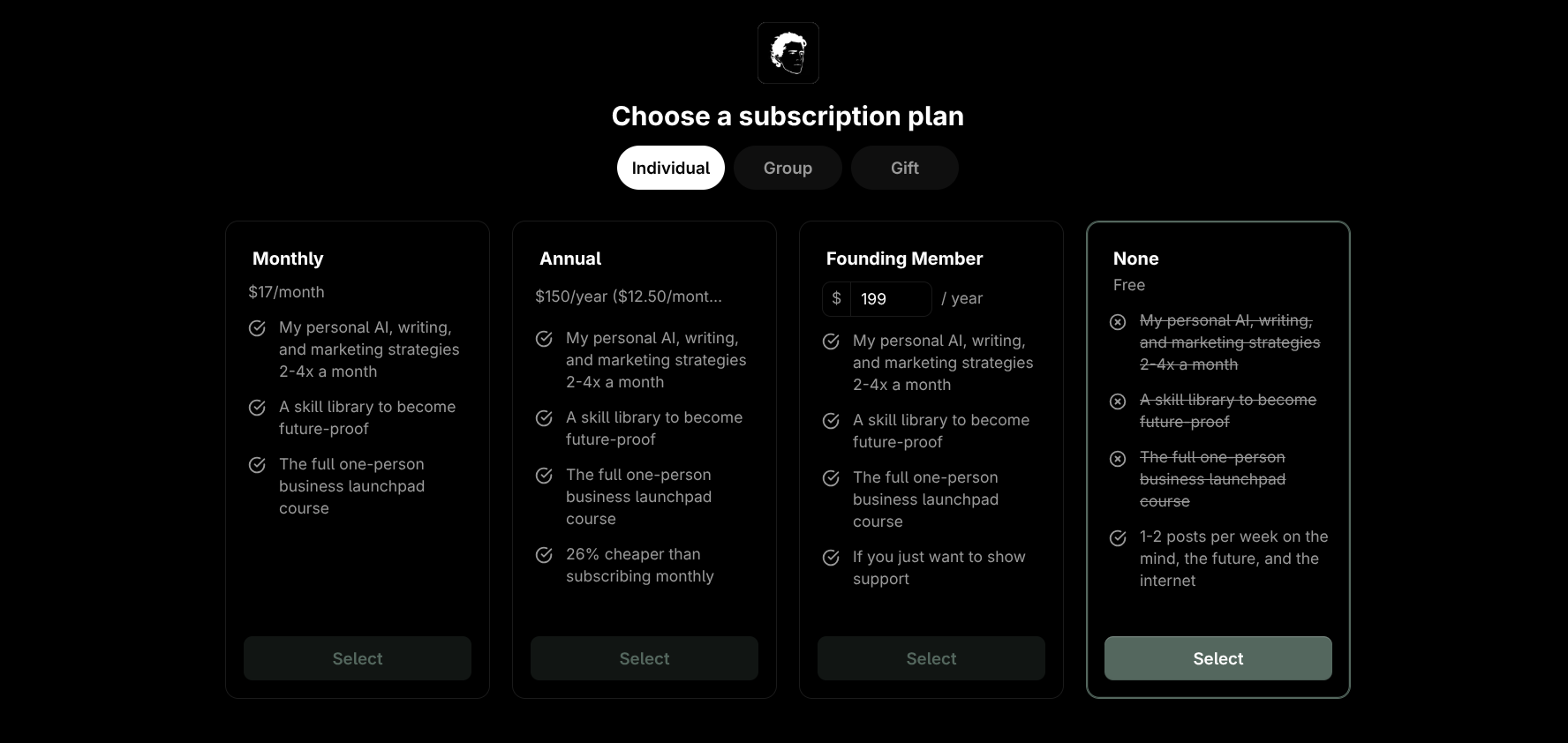
Substack has become one of the most powerful platforms for independent writers and creators to build sustainable, audience-driven publications.
But while the promise is exciting, the reality is this: most Substack writers struggle to grow not because their writing isn’t good, but because no one knows they exist.
If you’re starting from scratch, here’s a 9 step strategy backed by the experiences of successful Substack creators to help you grow your newsletter effectively in 2025.
1. Start With a Clear Niche
The biggest mistake new writers make is trying to appeal to everyone. Writing without a niche is the fastest way to slow growth.
Your niche is your anchor it helps readers immediately understand what you offer and why they should subscribe.
People don’t subscribe to newsletters; they subscribe to solutions. They’re looking for insight, expertise, or entertainment within a clear focus area.
Look at Substack’s fastest-growing publications, from investing analysis (The Bear Cave) to serialized fiction (Dracula Daily) to deep science (The Intrinsic Perspective). Each began with a strong niche and expanded only after establishing a loyal core audience.
Action step: Define a single, sharp niche that solves a clear reader problem or fulfills a distinct curiosity.
2. Use Notes for Discovery

Substack’s Notes feature, introduced in 2023, is now the platform’s most powerful organic discovery tool.
Notes work like a built-in social layer similar to Twitter, but without the noise. They allow writers to share short thoughts, snippets, and ideas that surface across the platform’s feed.
Consistent posting in Notes can significantly increase visibility. Writers who post daily Notes often see steady subscriber growth sometimes dozens per week before even publishing full-length posts.
Read more about Substack notes: https://open.substack.com/pub/on/p/introducing-notes
Action step: Post brief Notes daily. Share insights, short reflections, or excerpts from your work. Use them to attract new readers and signal activity to the algorithm.
3. Engage Authentically With Other Writers
Substack is a community-driven ecosystem. The platform’s most successful creators don’t just publish, they participate.
Engaging in the comments of other publications or on Notes creates visibility, fosters relationships, and builds credibility. Thoughtful interaction often drives more organic growth than direct promotion.
A well-crafted comment that adds perspective can introduce you to hundreds of potential readers. Engagement also deepens your understanding of what resonates within your niche.
Action step: Dedicate 15–30 minutes daily to interacting with other publications. Comment with value, not generic praise. Engagement builds connection and connection builds growth.
4. Leverage Guest Posts and Cross-Publications
Guest posting remains one of the most effective ways to accelerate newsletter growth.
By contributing to another writer’s Substack, you gain access to a pre-existing, engaged audience. Readers who enjoy your work in one publication are highly likely to subscribe to yours.
Collaborative posts and co-authored series also introduce both creators to fresh audiences and strengthen authority in your shared niche.
Action step: Identify complementary publications in your niche and pitch a guest post idea. Offer genuine value and craft your best content, it’s your chance to make a strong first impression.
5. Optimize Recommendations (Substack’s Built-In Growth Loop)
Substack’s Recommendations feature functions as an internal referral engine. When a reader subscribes to one publication, they’re prompted to follow others that writer recommends.
This feature can lead to exponential growth. Publications that strategically recommend and get recommended often report thousands of new subscribers gained through this channel alone.
Check out this really cool article on How to recommend other publications on Substack: https://support.substack.com/hc/en-us/articles/5036794583828-How-can-I-recommend-other-publications-on-Substack
Action step: Recommend a few relevant Substacks that complement your content. Build reciprocal relationships with other writers in your niche to increase mutual discovery.
6. Take Advantage of Substack’s SEO Power
Substack has a domain authority of 92, making it extremely SEO-friendly. This means your posts can rank on Google much faster than content on a brand-new blog.
Writers who optimize their posts for search often attract subscribers passively through organic traffic. The key is to think about what your audience is searching for and create content that matches that intent.
Basic SEO checklist for Substack posts:
- Use keyword-rich titles and subheadings (H1, H2, H3)
- Add meta descriptions and ALT text for images
- Link internally between your posts
- Write evergreen content that answers specific reader questions
Action step: Create 1–2 SEO-optimized posts per month. Over time, these will become steady sources of new subscribers.
7. Keep Your Newsletter Free At First
New writers often rush to introduce paid tiers too early. While monetization is important, it can hinder early growth.
Free content spreads. Paid content doesn’t. Readers are far more likely to share and recommend free posts, helping you reach new audiences faster.
 Example of how you can introduce different levels of subscriptions.
Example of how you can introduce different levels of subscriptions.
Once you’ve built a consistent subscriber base and a clear value proposition, you can introduce paid subscriptions, courses, or premium content tiers.
Action step: Focus your first 6–12 months purely on growth and engagement. Build trust before you monetize.
8. Maintain Consistency and Patience
Consistency is the foundation of growth on Substack.
Many creators abandon their newsletters after just a few months because growth feels slow. But most successful publications those with thousands of readers took years to build.
Set a publishing schedule you can realistically sustain (weekly, biweekly, or monthly) and commit to it. Over time, consistency compounds. Readers begin to expect your posts and engage more deeply.
Action step: Choose a schedule and stick to it. Reliability builds trust, and trust builds audiences.
9. Focus on Community, Not Just Numbers
The most successful Substack creators view their newsletters as communities, not content pipelines.
Musicians like Fog Chaser and writers like Tiffany Philippou use Substack not only to share their work but to foster direct connection with readers. The platform’s built-in email and comment tools make that interaction seamless.
This sense of belonging is what keeps subscribers engaged and turns casual readers into long-term supporters.
Action step: Use comments, polls, and Notes to engage readers directly. Treat your audience as collaborators, not consumers.
The Key Takeaway
Growing a Substack newsletter from zero is absolutely possible but it requires strategic focus, consistency, and genuine engagement.
Here’s the roadmap:
- Define a specific niche
- Use Notes daily for visibility
- Interact authentically with others
- Guest post and collaborate
- Leverage recommendations
- Optimize for SEO
- Stay free early on
- Be consistent
- Build a community, not just a list
Some Things to Keep in Mind
Growing on any platform takes patience and commitment.
The lucky few that for some reason go viral within or outside any online presence are just that. A lucky few.
For the rest it comes down to hard work and determination. If growing is the main goal a lot of people tend to give up way too fast no matter what they are creating.
The target group for one of my Substack publications is not even hanging out there so all I can do is too rely on myself in creating great content and get people share and talk about it.
The golden rule: Pick a publication schedule you can live with, and religiously stick to it.
Substack rewards writers who show up with conviction, clarity, and patience. If you commit to the process, your audience will find you and stay with you.